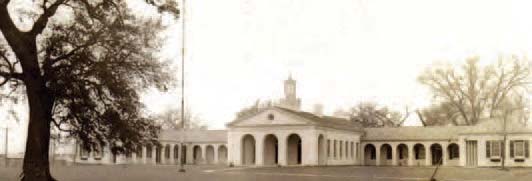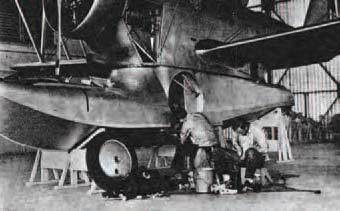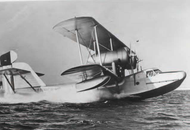Biloxi's Coast Guard Air Station: Its History Included Fighting Nazi U-Boats
Posted by Paige Gutierrez on Mar 24th 2023
This article originally written by Paige Gutierrez with the title "Semper Paratus: U.S. Coast Guard Air Station Biloxi". Paige is a local Biloxi writer for BNews Monthly, the monthly newsletter of the City of Biloxi. Photographs courtesy of the LHG Image Collection / Local History & Genealogy Department / Harrison County Library System unless otherwise specified.
Serving the Nation’s South Coast
In 1934 the Coast Guard commissioned Air Station Biloxi, the most centrally located of its new Gulf air stations for search and rescue on the nation’s South coast. The property chosen was at Point Cadet on Biloxi’s southeast shoreline. At that time, the Highway 90 bridge to Ocean Springs was at Howard Avenue to the north, so the unobstructed waters of Biloxi Bay became the site of Coast Guard seaplanes taking off and landing.
Initially, the base consisted of a hangar for shelter and maintenance, a radio communications station, a concrete staging area, and a seawall with a seaplane ramp leading to the water. The seaplanes were used for sea rescues and medical mercy missions. They watched with weather warnings. Construction was funded by President Franklin Roosevelt’s Public Works Administration.
Base housing would be needed. Visiting Coast Guard inspectors took note of the scenic beauty of their new base and the surrounding area. These officials instructed the architects and engineers to design living quarters that would be “very much in keeping with the general architectural design prevailing in that locality” and they predicted that it “will be one of Biloxi’s beauty spots when completed” (Coast Guard Magazine, October 1935).
In 1938, the Coast Guard barracks building was completed. The architecture was suited for the coastal climate, with arcades. Residents enjoyed bay breezes and views of the sunrise over the water. The Biloxi station gave special attention to the local fishing fleet, not only with medical evacuations, sea rescues, and weather alerts but also by delivering important messages from shore in the days before shrimp boats commonly had radios. The seaplanes carried wooden message boxes with long bright yellow streamers attached. The planes flew low over the shrimp boats. When the receiving boat was spotted, the message box was dropped nearby, where the boat crew could see and retrieve it with the help of the streamer.

War Comes to the Gulf
In the summer of 1942, there were as many as thirteen Nazi U-boats in the Gulf of Mexico for what German commanders called “the American hunting season.” These submarines torpedoed numerous U.S. and allied supply ships, passenger freighters, and oil tankers.
The Biloxi Air Station had a new mission: to patrol for Nazi U-boats that were devastating nearby shipping lanes to New Orleans and to help rescue the often-burned survivors of torpedoed vessels from oil-slicked Gulf waters. Many were flown to Lake Pontchartrain, where ambulances waited on the New Orleans shore to take them to the U.S. Marine Hospital.
Fifty-six vessels were sunk by U-boats in the Gulf of Mexico in 1942. Biloxi Air Station planes joined in many rescue efforts in coordination with other military and civilian participants, including the aftermath of the sinking of the passenger freighter SS Robert E. Lee on July 30, 1942. Over three hundred survivors of this disaster, including refugees from the war in Europe, were saved from drowning in the Gulf.

Later Years
The Biloxi Coast Guard Air Station was downsized after being damaged in the 1947 hurricane, and assets were transferred to other bases. Changes in aviation design and technology contributed to the Coast Guard’s decision to close the facility. Thereafter, the old base was used by the Mississippi National Guard, who famously patrolled Biloxi during hurricane Camille in 1969, rescuing people with their amphibious vehicles.
Later, for years the airplane hangar served as Biloxi’s seaside, covered farmers’ market, and as a place for festivals, family reunions, community events, and as a barn for Mardi Gras floats. Finally, the old barracks housed Biloxi’s original Seafood Industry Museum from its opening in 1986 until destroyed by Hurricane Katrina in 2005.
Hungry for shrimp? Visit our Shop page to order wild-caught Gulf shrimp to be shipped to anywhere in the country today!

